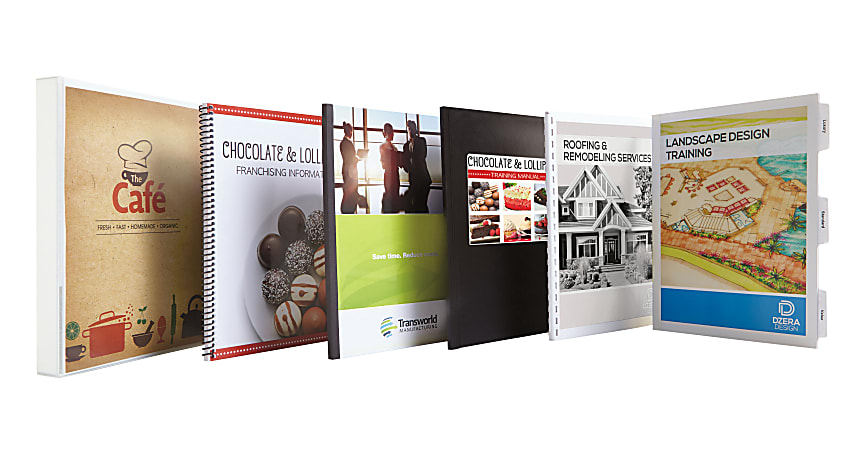A Curated Guide to Critically Acclaimed Hardcover Books
A Curated Guide to Critically Acclaimed Hardcover Books
Blog Article
A Comprehensive Guide to the Process of Hardcover Books Printing
When you begin the trip of hardcover book printing, recognizing the whole process is important. From preparing your manuscript to choosing the right materials, each step plays an essential role in the final product. You'll need to ponder style aspects and printing methods that fit your vision. As you browse via binding and quality assurance, you'll find that every choice influences the publication's general allure. So, what follows in this detailed process?
Comprehending the Hardcover Publication Structure
When you check out the world of hardcover publications, you'll rapidly notice that their structure is distinct and willful. The outer casing, often made of sturdy cardboard, gives durability and defense. You'll discover a textile or natural leather covering, which not just enhances appearances yet also contributes to guide's durability. Inside, the endpapers link the cover to the message block, making sure a seamless interchange.
The message block itself is composed of multiple signatures, or folded up sheets, stitched together for toughness. You'll see that the back is reinforced, enabling a smooth lay-flat analysis experience - hardcover books. Furthermore, the book's weight usually communicates a sense of top quality and permanence
Hardcover books commonly feature a dirt jacket, which works as an advertising and marketing tool while safeguarding the cover. Comprehending these aspects assists you value the workmanship behind hardbound publications and their distinct appeal in the literary world.
Manuscript Preparation and Modifying
Getting your manuscript ready for printing is essential, and it starts with proper format standards. You'll need to recognize the editing procedure to refine your job and guarantee it resonates with viewers. Plus, mastering checking techniques can assist you capture those annoying mistakes before your book goes to print.

Manuscript Formatting Standards
Proper manuscript format is essential for creating a professional-looking hardcover book. Beginning by choosing a basic font style like Times New Roman or Arial in 12-point size. Use double-spacing throughout the document to enhance readability. Set your margins to 1 inch on all sides, providing your message space to breathe. Number your web pages in the top right edge, and include your phase titles at the beginning of each new section. Use clear headings to show sections, and prevent extreme formatting like vibrant or italics unless required. See to it to proofread your manuscript for consistency in style, making certain that whatever from punctuation to spacing sticks to your picked guidelines. Complying with these steps will set a strong foundation for your publication.
Editing Process Essentials
Editing your manuscript is an essential action that can change it from an outline right into a polished final item. Beginning by checking out your work critically, concentrating on structure, quality, and flow. Look for disparities in your story, character development, or argumentation. It's valuable to take breaks between rounds of editing and enhancing to acquire fresh viewpoints. Do not think twice to reduce unneeded web content or rephrase unpleasant sentences; this will certainly improve readability. Consider seeking comments from relied on peers or specialist editors that can offer useful insights. Bear in mind, editing and enhancing isn't almost fixing mistakes; it's about improving your voice and ensuring your message resonates with readers. Welcome the procedure, and you'll see your manuscript shine.
Checking Techniques Introduction
When you've brightened your manuscript via editing and enhancing, the following action is to assure it's correct that can distract viewers. Start by pausing after editing; fresh eyes capture errors much better. Review your manuscript out loud-- this aids you hear awkward wording and spot typos. Use digital devices like spell checkers for first scans, but do not depend exclusively on them. Take into consideration publishing your manuscript; analysis on paper can reveal errors that displays miss out on. Concentrate on one sort of error each time, whether it's spelling or grammar, to prevent sensation overwhelmed. Get a relied on buddy or expert proofreader to offer a fresh perspective. Their feedback can highlight issues you may ignore.
Designing guide Cover and Inside
When you're developing your publication cover and inside, you'll intend to focus on necessary layout aspects that record your target market's attention. Choosing the ideal typography styles and carefully selecting shades and imagery can make all the difference in conveying your book's motif. Let's discover just how these options can raise your work and draw in visitors.
Necessary Design Aspects
Producing an attractive book cover and a properly designed interior is essential for bring in readers and improving their experience. Choose shades and pictures that mirror your publication's theme and mood.
A clean, organized layout helps visitors navigate easily. Remember, a natural style throughout your publication cultivates an expert look that can greatly impact a viewers's choice to select it up.
Choosing Typography Styles
Typography plays a necessary role in both the publication cover and interior layout, shaping just how viewers perceive your content. When selecting typography styles, consider your book's category and target audience. Assume about power structure-- utilize different styles for headings and body text to assist visitors easily via your job.
Shade and Imagery Option
Choosing the right colors and images is vital for catching readers' interest and conveying your book's styles. Begin by considering your category; vibrant shades could help a children's news publication, while low-key tones fit a secret story. hardcover books. Use imagery that reverberates with your web content-- images, pictures, or abstract layouts can improve your message
When designing the cover, make specific the imagery doesn't bewilder the title and writer's name; quality is key. This natural approach not just elevates your publication's visual however likewise improves the viewers's experience, making it a lot more memorable.
Choosing the Right Paper and Materials
When selecting paper and materials for your hardbound book, it's important to ponder exactly how they'll affect the total feel and look of your job. Start by selecting the best paper weight; heavier stock typically shares quality and longevity, while lighter paper can produce a more fragile touch. Think about the surface as well; shiny paper boosts colors and pictures, while matte can give an innovative, downplayed look.
Cloth, leather, or printed paper can set the tone for your book. Additionally, believe concerning the binding products; utilizing high-grade sticky warranties your book lasts.
Ultimately, the choices you make below show your vision, so take the time to example various materials (hardcover books). Your selections will assist produce a book that's not just aesthetically attractive yet functional and likewise sturdy
The Printing Process: Techniques and Technologies
A selection of printing methods and innovations can bring your hardbound book to life, each offering unique benefits. Digital printing is a prominent option for short runs, permitting fast turnaround and economical solutions. It's ideal when you require to print smaller sized amounts without sacrificing top quality. On the various other hand, offset printing master producing huge quantities, delivering high-grade and consistent outcomes. This approach is perfect for substantial magazines where color accuracy and great information matter.
For special effects, you may take into consideration strategies like aluminum foil stamping or embossing, which can include a luxurious touch to your cover. Additionally, you can choose various inks, find more info consisting of green choices that deal with environmentally mindful readers. Understanding these methods helps you make informed choices, ensuring your hardbound publication not only looks great but additionally fulfills your manufacturing needs properly. Pick the best technique to raise your book's appeal and impact.
Binding Approaches for Hardcover Books
Several binding approaches can transform your hardbound book right into a long lasting and eye-catching product. Another approach is the excellent binding, which utilizes adhesive to hold the web pages with each other, allowing for a streamlined spinal column however less longevity contrasted to case binding.
You could also consider spiral binding, which enables your book to lay flat, making it perfect for guidebooks or workbooks. Each binding method has its benefits and fits various demands, so assume regarding your publication's objective and target market when selecting the finest option for your task.
High Quality Control and Last Touches
After selecting the right binding approach for your hardcover book, quality assurance becomes necessary to validate your end product satisfies your assumptions. Beginning by inspecting the printed web pages for any kind of errors or inconsistencies in color and format. You don't intend to miss any typos or misprints that can influence your visitors' experience.
Next, inspect the binding honesty. Verify the web pages are firmly affixed and that the spinal column is strong. A well-bound book not only looks expert but also feels long lasting in your hands.
Furthermore, pay interest to the cover. Look for any scuff marks or imbalances in the art work. Make sure they're used regularly throughout all duplicates. if you've opted for special coatings like embossing or aluminum foil stamping.
Lastly, carry out an extensive evaluation of the entire batch before transferring to circulation. By doing this, you can verify that every publication reflects your high standards.
Often Asked Concerns
How much time Does the Hardbound Book Printing Refine Commonly Take?

What Is the Minimum Order Amount for Hardcover Books?
The minimum order amount for hardbound publications normally begin around 100 duplicates, but it can vary based on the printer. You need to talk to your selected printing service for their details requirements and pricing.

Can I Print Hardcover Books in Customized Sizes?
Yes, you can publish hardcover books in customized sizes. Lots of printing solutions use flexibility with imp source dimensions, permitting you to choose a format that suits your project. Simply validate the specifications prior to positioning your order.
Exist Eco-Friendly Options for Hardcover Book Printing?
Yes, you can discover environmentally friendly choices for hardbound book printing. Numerous business utilize recycled materials and lasting inks. Simply ask your printer about their environment-friendly methods to guarantee your task lines up with your ecological worths.
What Are the Costs Related To Hardbound Publication Printing?
When thinking about hardbound book printing prices, you'll need to variable in products, design, and printing approaches. Added costs like shipping and binding can additionally influence your overall budget, so plan appropriately for your project.
When you start the journey of hardbound publication printing, understanding the entire process is essential.A selection of printing methods and technologies can bring your hardcover book to life, each offering one-of-a-kind advantages. Just how Lengthy Does the Hardbound Book Printing Process Typically Take?
The hardcover book printing process normally takes around 2 to 6 weeks.Yes, you can discover eco-friendly choices for hardbound publication printing.
Report this page